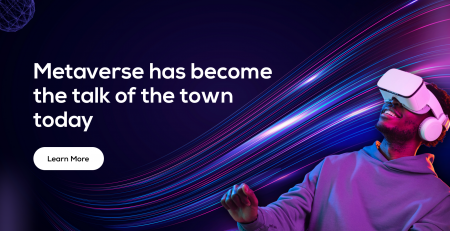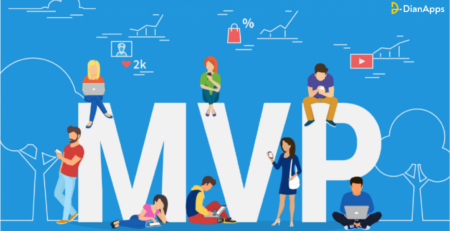The Emergence of ‘Vibe Coding’: Building Software Without Traditional Coding Methods
Now, coding has a vibe too? That’s not right, or is it? Vibe coding is a concept in fact, a brilliant idea that is emerging in 2025.
What’s its use?
It lets software app developers and non-technical experts ease out the stage of dealing with complex programming languages, heavy code-writing, and it saves on lengthy coding hours.
Making it the best way to succeed in business streams while saving on massive cost and time.
The aggressive use of Artificial Intelligence tools and strategies has resulted in simplifying the app development process, even for people who are novice programmers or individuals who don’t know the difference between Python and JavaScript.
Vibe coding is an AI-assisted concept where you describe your software idea in plain human-altered language, and AI writes the entire code for you. It’s that simple, and this guide will show you how!
Let’s take a deep look at the definition of vibe coding ahead!
What is Vibe Coding?
A well-known computer programmer, Andrej Karpathy, also the co-founder of OpenAI and former AI leader at Tesla, coined the term vibe coding in February 2025.
Vibe coding is an AI-dependent programming technique that enables the user to issue command prompts to a large language model (LLM) such as ChatGPT and GitHub Copilot, and the tools turn requests into fully functional code that can further easily be copied and implemented in the development environment.

Mr Karpathy described his approach as conversational, using voice commands while AI generates the actual code. “It’s not really coding – I just see things, say things, run things, and copy-paste things, and it mostly works.”
Karpathy acknowledged that vibe coding has limitations, noting that AI tools are not always able to fix or understand bugs, requiring him to experiment with unrelated changes until the problems are resolved.
He concluded that he found the technique “not too bad for throwaway weekend projects” and described it as “quite amusing.“
With the availability of tools that can auto-complete, suggest code, or even write full programs, developers can focus on the broader picture, like user experience, creative problem-solving, and higher-level design.
So, if anyone looking to shift from manual writing to smart AI-generated code infrastructure, go with vibecoding.
Recommended Read: Top 6 Marketing Tools Better Than ChatGPT
With the rise of AI and “vibe coding,” how will the industry change? Will fundamentals become more important?
The rise of AI and “vibe coding” will undoubtedly reshape the tech industry, especially how software development is approached. Here’s a breakdown of the possible changes and how fundamentals might evolve:
Increased Focus on Collaboration:
AI tools will allow developers to spend less time focusing on the minutiae of writing code and more time on problem-solving, design, and user-centered approaches. This opens up space for collaboration between people with different skill sets, as the “vibe coding” approach encourages creativity.
Speed and Efficiency:
AI-driven coding tools will boost efficiency, reducing development time. This means that time spent on routine coding tasks will be minimized, and developers can focus more on complex aspects of their projects.
Reduced Barrier for Entry:
AI-assisted coding tools make it easier for non-developers or individuals from non-traditional backgrounds to write code. It opens the field to more people, allowing creative minds (not necessarily formally trained in computer science) to build software.
Democratization of Development:
More people will be able to build applications, websites, and products. It’s likely that AI will help “democratize” development, meaning anyone with a good idea could potentially create a product without needing to be a deep technical expert.
Even with the rise of AI, fundamentals will still be crucial. Here’s why:
Critical Thinking and Problem Solving:
AI can help with writing code, but it cannot replace human intuition and the ability to design complex systems. Developers still need to have a strong grasp of algorithms, data structures, and software architecture to design efficient, scalable systems. AI tools will assist, but they can’t entirely replace the need for strategic thinking in solving problems.
Understanding Code and Debugging:
As AI auto-generates code, the risk of bugs or inefficiencies increases. Developers must have a deep understanding of the code they are working with to identify issues, ensure quality, and optimize performance.
Security Concerns:
With AI tools writing a lot of code, developers need to understand the security implications of the code and ensure the software is not vulnerable to exploits. Fundamental knowledge of encryption, access control, and threat modeling will remain essential.
Ethics and Design:
As AI plays a larger role in development, ethical considerations become paramount. Developers will need to apply a strong understanding of ethical practices in coding, ensuring privacy, fairness, and transparency. Fundamentals in ethics and data usage will only grow in importance.
Custom Solutions:
While AI can offer suggestions, unique, cutting-edge solutions to problems may still require custom-built approaches. The fundamentals of understanding business needs, technical constraints, and customer experience will drive the need for bespoke solutions, which AI might not fully replicate.
Also read the top software development tools that developers swear by in 2025
What are the Challenges of Vibe Coding in the Tech Industry?
While the use of Vibe Coding is a hot deal, some experts are questioning its availability and stating “why you shouldn’t use vibe coding today” or “vibe coding is NOT the future”. Let’s see some of the drawbacks of this concept that may affect the tech industry.
1. Quality Control and Debugging

AI-generated code can sometimes be suboptimal, inefficient, or even error-prone. Without a deep understanding of how the code was generated, developers may struggle to debug or improve the code, leading to longer troubleshooting periods.
Impact:
Poor-quality or buggy code can increase maintenance time and lead to vulnerabilities, affecting the long-term stability and scalability of applications.
2. Security and Vulnerabilities
AI tools often don’t fully understand security contexts and best practices. Code generated by AI could have hidden vulnerabilities or fail to follow security guidelines, increasing the risk of data breaches or other security issues.
Impact:
Without sufficient oversight, AI-generated code could introduce security gaps, jeopardizing user data and the integrity of the system.
3. Loss Control Over the Code
AI tools can operate as a “black box,” meaning developers may not fully understand how the tool arrived at a particular solution. This lack of transparency makes it hard for developers to trust or modify the code efficiently.
Impact:
A lack of control and understanding over AI-generated code could result in unpredictable behavior, making the system harder to debug, extend, and maintain.
4. Over-reliance on AI
Developers might start relying too heavily on AI tools, which could erode core coding skills and creative problem-solving abilities. While AI can speed up tasks, it may hinder long-term growth if developers don’t actively engage with the fundamentals.
Impact:
Over-reliance on AI could make developers less proficient in solving complex problems and reduce the depth of their technical expertise, especially in areas where AI tools fall short.
5. Ethical Concerns and Bias
AI models are trained on data that can contain biases, and these biases can carry over into the code they generate. This can lead to ethical issues, such as discrimination or unfair algorithms, which might not be immediately evident to developers.
Impact:
Ethical concerns and biases in AI-generated code could harm users, particularly in areas like AI-driven decision-making systems, and lead to a loss of trust in technology.
How about we rundown a quick Vibe code example for you? Maybe take an example of creating a social commerce app.
Step-by-Step Guide to Creating a Social Commerce App
Creating a complete Social Commerce App involves multiple components, and the code would vary depending on the technology stack you’re using. Here’s a high-level breakdown and corresponding code snippets that will help you get started with the front-end, back-end, and database setup.
The main components of a Social Commerce App typically include:
- User Authentication
- Product Listing
- Product Reviews
- Shopping Cart
- Payment Integration
- Social Features (e.g., Reviews, Ratings, Social Sharing)
- Admin Panel
Assumptions:
- You will use React Native app development services for the mobile front-end.
- Node.js with Express.js for the back-end.
- MongoDB as the database.
- JWT (JSON Web Tokens) for authentication.
1. Backend (Node.js + Express + MongoDB)
Step 1: Setup your Node.js and Express Backend
|
1 2 3 4 5 6 7 |
mkdir social-commerce-app-backend cd social-commerce-app-backend npm init -y npm install express mongoose cors jwt-simple bcryptjs dotenv |
Step 2: Create the basic server (server.js)
|
1 2 3 4 5 6 7 8 9 10 11 12 13 14 15 16 17 18 19 20 21 22 23 24 25 26 27 28 29 30 31 32 33 34 |
const express = require('express'); const cors = require('cors'); const mongoose = require('mongoose'); const dotenv = require('dotenv'); dotenv.config(); const app = express(); const port = process.env.PORT || 5000; app.use(cors()); app.use(express.json()); mongoose.connect(process.env.MONGODB_URI, { useNewUrlParser: true, useUnifiedTopology: true }) .then(() => console.log('Database connected')) .catch(err => console.log('Database connection error: ', err)); app.listen(port, () => { console.log(`Server is running on port ${port}`); }); |
Step 3: User Model and Authentication (user.model.js)
|
1 2 3 4 5 6 7 8 9 10 11 12 13 14 15 16 17 18 19 20 21 22 23 24 25 26 27 28 29 30 31 32 33 34 35 36 37 38 39 40 41 42 43 44 45 46 47 48 49 50 |
const mongoose = require('mongoose'); const bcrypt = require('bcryptjs'); const jwt = require('jwt-simple'); const userSchema = new mongoose.Schema({ username: { type: String, required: true, unique: true }, email: { type: String, required: true, unique: true }, password: { type: String, required: true }, role: { type: String, default: 'user' }, // admin, user, etc. }); userSchema.pre('save', async function (next) { if (!this.isModified('password')) return next(); this.password = await bcrypt.hash(this.password, 10); next(); }); userSchema.methods.comparePassword = function (password) { return bcrypt.compare(password, this.password); }; userSchema.methods.generateAuthToken = function () { const payload = { id: this._id, username: this.username, role: this.role }; return jwt.encode(payload, process.env.JWT_SECRET); }; const User = mongoose.model('User', userSchema); module.exports = User; |
Step 4: Authentication Routes (auth.routes.js)
|
1 2 3 4 5 6 7 8 9 10 11 12 13 14 15 16 17 18 19 20 21 22 23 24 25 26 27 28 29 30 31 32 33 34 35 36 37 38 39 40 41 42 43 44 45 46 47 48 49 50 |
const express = require('express'); const User = require('./models/user.model'); const bcrypt = require('bcryptjs'); const jwt = require('jwt-simple'); const router = express.Router(); // Register Route router.post('/register', async (req, res) => { const { username, email, password } = req.body; const user = new User({ username, email, password }); await user.save(); const token = user.generateAuthToken(); res.json({ token }); }); // Login Route router.post('/login', async (req, res) => { const { username, password } = req.body; const user = await User.findOne({ username }); if (!user || !(await user.comparePassword(password))) { return res.status(400).json({ error: 'Invalid credentials' }); } const token = user.generateAuthToken(); res.json({ token }); }); module.exports = router; |
2. Frontend (React Native)
Step 1: Install Dependencies for React Native
|
1 2 3 4 5 |
npx react-native init SocialCommerceApp cd SocialCommerceApp npm install axios react-navigation react-navigation-stack react-navigation-drawer react-native-gesture-handler react-native-reanimated |
Step 2: Create the Authentication Screens (Login & Register)
LoginScreen.js:
|
1 2 3 4 5 6 7 8 9 10 11 12 13 14 15 16 17 18 19 20 21 22 23 24 25 26 27 28 29 30 31 32 33 34 35 36 37 38 39 40 41 42 43 44 45 46 47 48 49 50 51 52 53 54 55 |
import React, { useState } from 'react'; import { TextInput, Button, View, Text } from 'react-native'; import axios from 'axios'; const LoginScreen = ({ navigation }) => { const [username, setUsername] = useState(''); const [password, setPassword] = useState(''); const handleLogin = async () => { try { const response = await axios.post('http://your-server-url/login', { username, password }); // Store token and navigate console.log('Login Success:', response.data.token); navigation.navigate('Home'); // Navigate to Home Screen after successful login } catch (error) { console.error('Login failed', error.response.data); } }; return ( <View> <TextInput placeholder="Username" value={username} onChangeText={setUsername} /> <TextInput placeholder="Password" secureTextEntry value={password} onChangeText={setPassword} /> <Button title="Login" onPress={handleLogin} /> <Text onPress={() => navigation.navigate('Register')}>Don't have an account? Register</Text> </View> ); }; export default LoginScreen; |
Step 3: Create Product Listing and Shopping Cart Screens
You can create a ProductScreen.js to list the products and CartScreen.js to show the cart with the ability to add and remove products.
ProductScreen.js:
|
1 2 3 4 5 6 7 8 9 10 11 12 13 14 15 16 17 18 19 20 21 22 23 24 25 26 27 28 29 30 31 32 33 34 35 36 37 38 39 40 41 42 43 44 45 46 47 48 49 50 51 52 53 54 55 56 57 58 59 60 61 62 63 64 65 |
import React, { useState, useEffect } from 'react'; import { FlatList, View, Text, Button } from 'react-native'; import axios from 'axios'; const ProductScreen = ({ navigation }) => { const [products, setProducts] = useState([]); useEffect(() => { const fetchProducts = async () => { try { const response = await axios.get('http://your-server-url/products'); setProducts(response.data); } catch (error) { console.error('Failed to fetch products', error); } }; fetchProducts(); }, []); return ( <FlatList data={products} renderItem={({ item }) => ( <View> <Text>{item.name}</Text> <Text>{item.price}</Text> <Button title="Add to Cart" onPress={() => {/* Add to cart logic */}} /> </View> )} keyExtractor={(item) => item.id.toString()} /> ); }; export default ProductScreen; |
3. Product Model for Backend
Product Model (product.model.js)
|
1 2 3 4 5 6 7 8 9 10 11 12 13 14 15 16 17 18 |
const mongoose = require('mongoose'); const productSchema = new mongoose.Schema({ name: { type: String, required: true }, description: { type: String, required: true }, price: { type: Number, required: true }, imageUrl: { type: String }, }); const Product = mongoose.model('Product', productSchema); module.exports = Product; |
4. Admin Panel
Create an admin panel where admin can add, edit, and delete products. You can implement these functionalities with basic CRUD operations using Express routes for product management.
This is just a starting point, and there is much more you need to do. You may need additional features such as integrating payment gateways (e.g., Stripe, PayPal), adding social media features, creating an admin dashboard, implementing advanced product search, and optimizing your app.
The architecture could vary based on the requirements, but this should help you get started with building a Social Commerce App.
So, What’s the Future Outlook of Vibe Coding?
Looking at the current state of Vibe Coding, all we can say is IT’S TRENDING! Weighing down its pros and cons, vibe coding has become not just a convenient option for developers and non-technical experts but also a game-changing aspect that has been said as a necessity to evolve with time.
What’s our take on this? At DianApps, we see AI not as a replacement but as a partner. It automates what’s repetitive so our teams can focus on what matters—innovation, strategy, and creativity.
AI is powerful. But its real power? It’s in the hands of people who know how to use it.
That’s why we’re investing in upskilling, ensuring our teams evolve with AI, not against it.
Some Real-World Examples for your reference can be:
- Marketing Tool Built by a Non-Developer, such as Content Genie
- Product Hunt Hit with Zero Coding Skills, such as Cursor AI
- Pieter Levels’ Flight Simulator (https://x.com/i/status/1893385114496766155)
Tools for Vibe Coding are:
- Replit Agent: Creators who want the most flexibility and don’t mind a slight learning curve.
- Lovable: True beginners who want the simplest possible experience.
- Bolt.new: Quick prototyping with minimal setup.
- Rosebud AI: Creative projects that go beyond typical web apps.
- Databutton: More structured, business-focused app development.
Tips on how to get started:
- Start with simple projects at first
- Give quality and effective AI prompts
- Do manual iterations yourself (we don’t advise relying on AI tools completely because that’s where the challenge comes)
- Master the art of refinement
- Thoroughly test what the tool provides.
- If things don’t work as per the expectation, Start Over!
- Learn from the process and streamline operations smart!
The future isn’t AI’s vibe coding vs. humans. It’s AI with humans. And those who embrace this balance? They won’t just keep up. They’ll lead.




